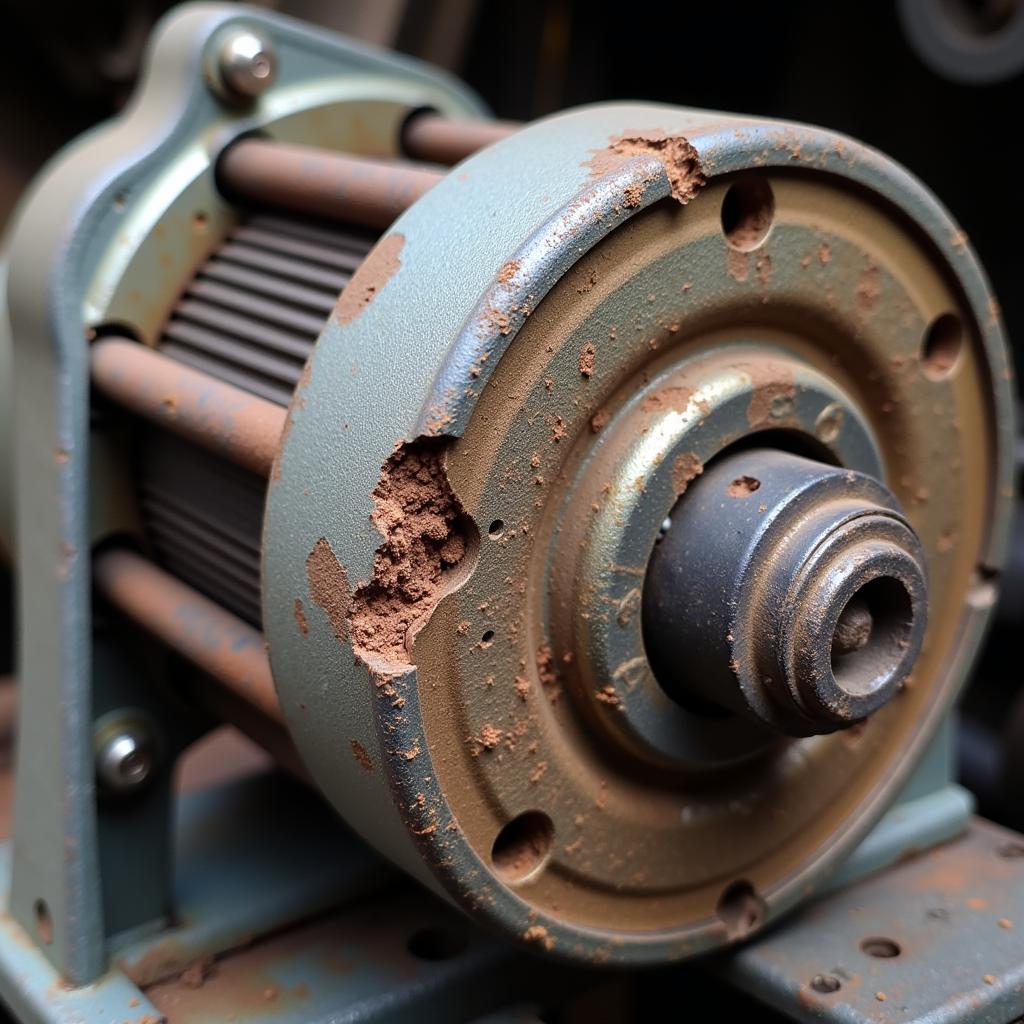The brake warning light on your 2015 Dodge Grand Caravan dashboard is a crucial safety feature designed to alert you of potential issues within your braking system. Ignoring this warning could jeopardize your safety and that of your passengers. This comprehensive guide delves into the common reasons behind a lit brake warning light on a 2015 Dodge Grand Caravan and provides you with the knowledge to address the problem effectively.
Understanding Your Brake Warning Light
Before jumping into diagnostics, it’s essential to understand what triggers the brake warning light. In most vehicles, including the 2015 Dodge Grand Caravan, this light can illuminate for two primary reasons:
- Engaged Parking Brake: The most straightforward cause is an engaged parking brake. Always ensure the parking brake is fully released before driving.
- Brake System Malfunction: If the parking brake isn’t the culprit, the warning light indicates a potential issue within your braking system, ranging from low brake fluid to a serious mechanical failure.
Common Causes of a Brake Warning Light on a 2015 Dodge Grand Caravan
Here’s a breakdown of the most frequent culprits behind a glowing brake warning light in a 2015 Dodge Grand Caravan:
1. Low Brake Fluid
Why it matters: Brake fluid is the lifeblood of your braking system, transmitting the force from your foot on the brake pedal to the wheels, enabling your vehicle to stop.
Signs: A soft or spongy brake pedal often accompanies low brake fluid.
What to do:
- Check the brake fluid reservoir: Locate the reservoir under the hood (refer to your owner’s manual for the exact location).
- Inspect the fluid level: The reservoir will have a “Min” and “Max” marking. If the fluid level is below the “Min” mark, it’s time to add brake fluid.
- Top up with the correct fluid: Use only DOT 3 brake fluid, the type recommended for your 2015 Dodge Grand Caravan.
- Inspect for leaks: If the fluid level is consistently low, you likely have a leak. Thoroughly check the brake lines, hoses, and connections for any signs of wetness or seepage.
Caution: Adding brake fluid alone won’t fix a leak. If you suspect a leak, it’s crucial to have a professional mechanic inspect and repair the issue immediately.
2. Worn Brake Pads
Why it matters: Brake pads are designed to wear down over time. They create the friction needed to slow and stop your vehicle.
Signs: Squealing, screeching, or grinding noises when applying the brakes are telltale signs of worn brake pads.
What to do: Have a mechanic inspect your brake pads as soon as you notice these signs.
Important Note: Driving with severely worn brake pads can damage your brake rotors, leading to more costly repairs.
3. Faulty Brake Caliper
Why it matters: Brake calipers house the brake pads and apply pressure to them, creating the friction needed for braking.
Signs: Pulling to one side when braking, uneven brake pad wear, or a dragging sensation can indicate a faulty brake caliper.
What to do: Diagnosing brake caliper issues requires mechanical expertise. Consult a qualified mechanic for inspection and repair.
4. ABS System Malfunction
Why it matters: The Anti-lock Braking System (ABS) prevents your wheels from locking up during hard braking, helping you maintain steering control.
Signs: In addition to the brake warning light, the ABS warning light might illuminate on your dashboard.
What to do: A mechanic can diagnose the issue using a specialized scanner to read ABS fault codes.
When to Seek Professional Help
While some causes of a lit brake warning light might seem simple to address, it’s crucial to remember that your brake system is critical for your safety. Never attempt to diagnose or repair complex brake problems yourself.
Seek immediate professional help if:
- You notice brake fluid leaking.
- Your brake pedal feels soft or goes to the floor.
- You hear grinding or screeching sounds when braking.
- Your vehicle pulls to one side when braking.
- The ABS and brake warning lights are both illuminated.
Expert Insights
“Many car owners underestimate the importance of regular brake system maintenance,” says John Smith, a certified automotive technician with over 20 years of experience. “Brake fluid, for instance, absorbs moisture over time, reducing its effectiveness. Regular fluid flushes and inspections can prevent costly repairs and ensure your safety on the road.”
Conclusion
Addressing a brake warning light on your 2015 Dodge Grand Caravan should be your top priority. By understanding the common causes and following the recommended steps, you can ensure a safer driving experience. Remember, when in doubt, always consult a qualified mechanic for proper diagnosis and repair. Your safety is paramount.

